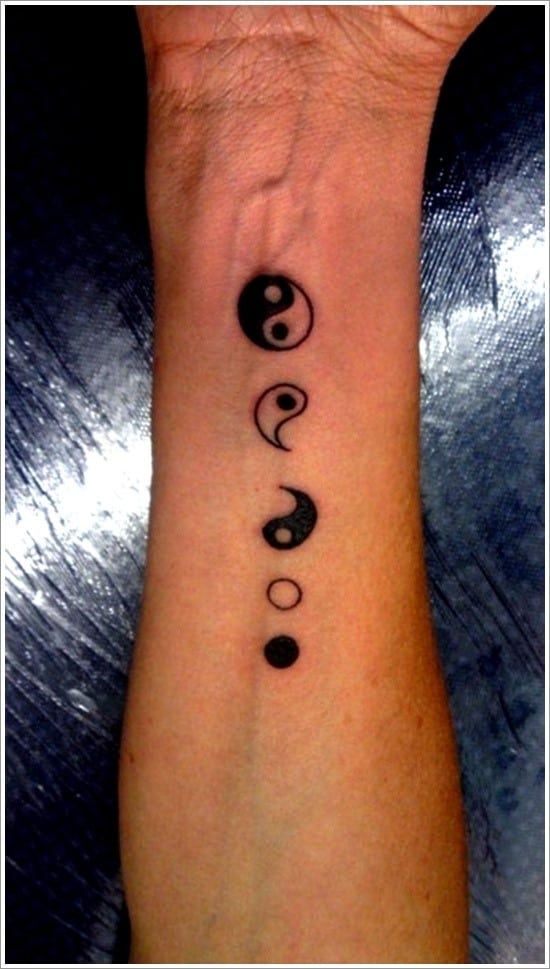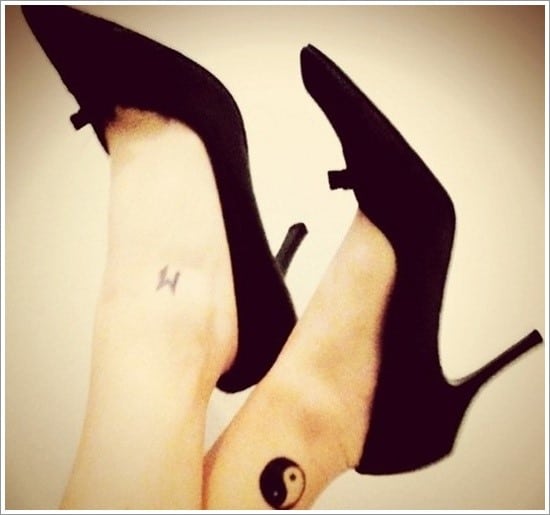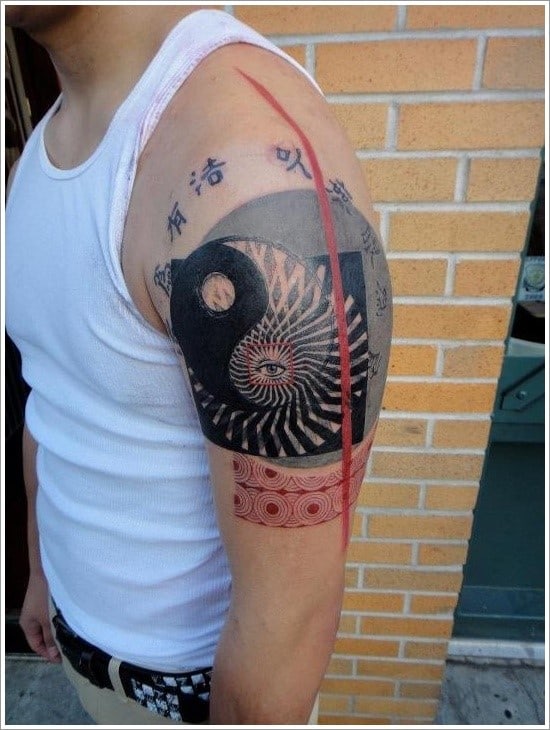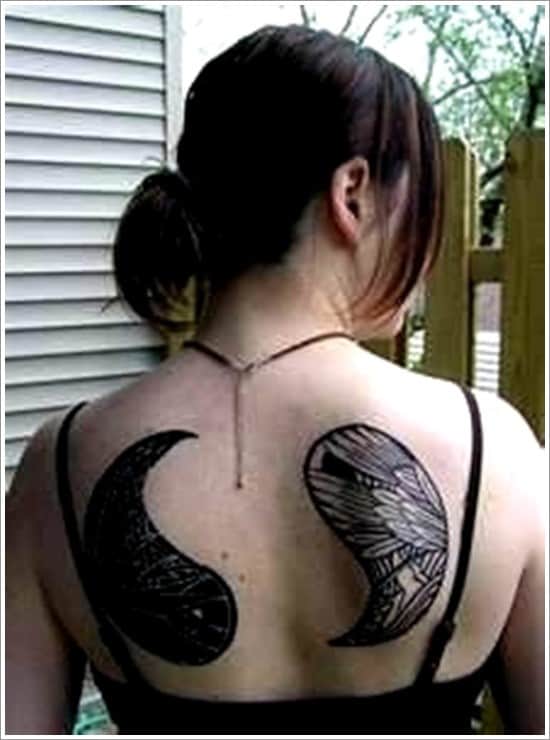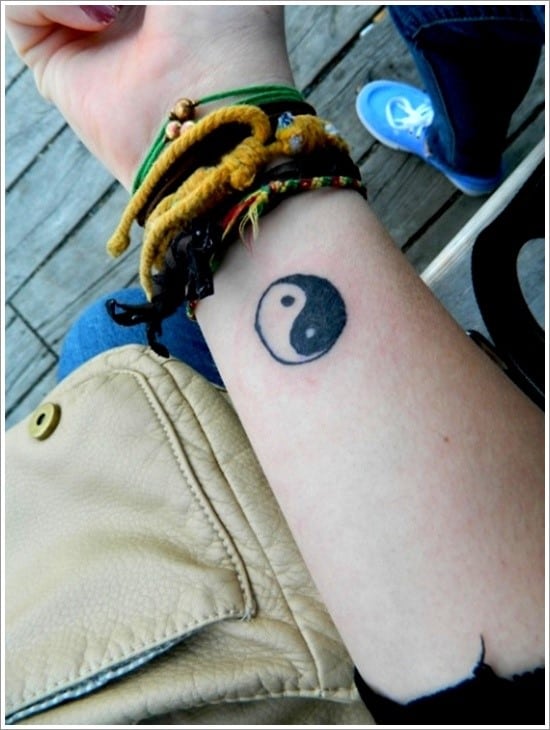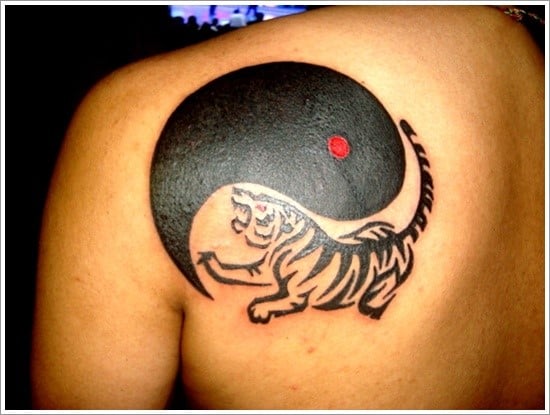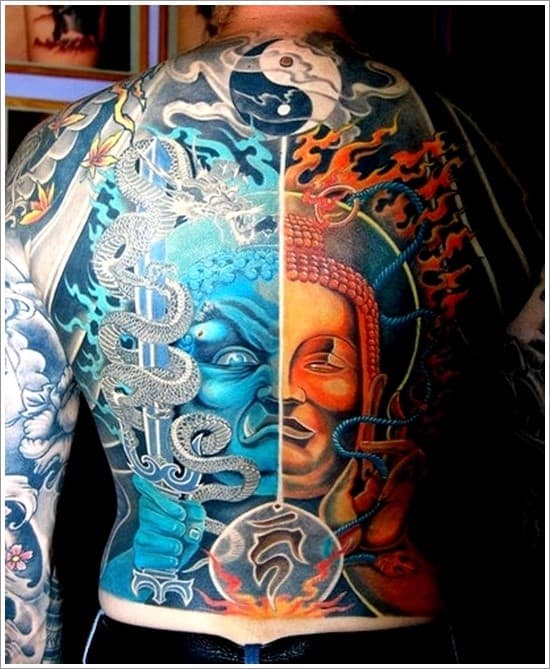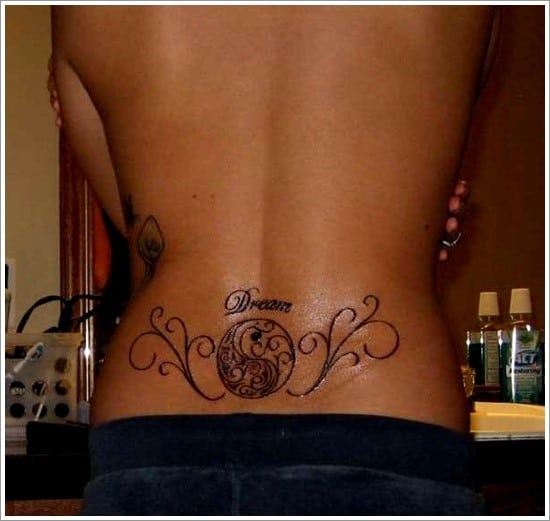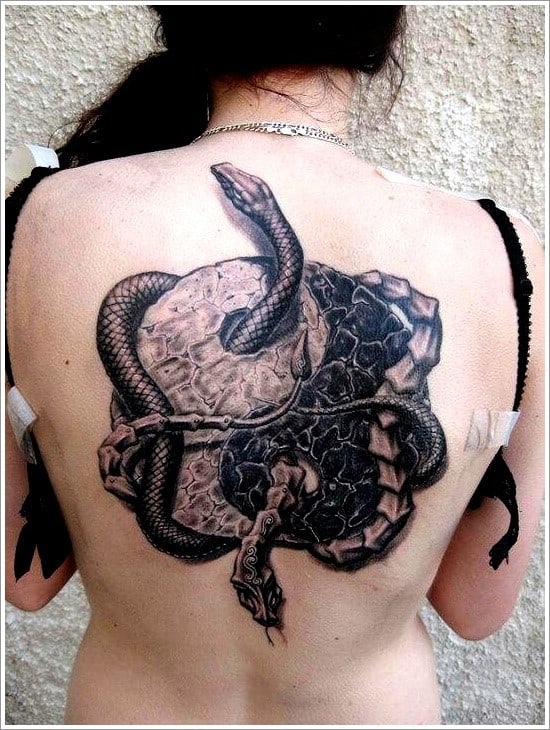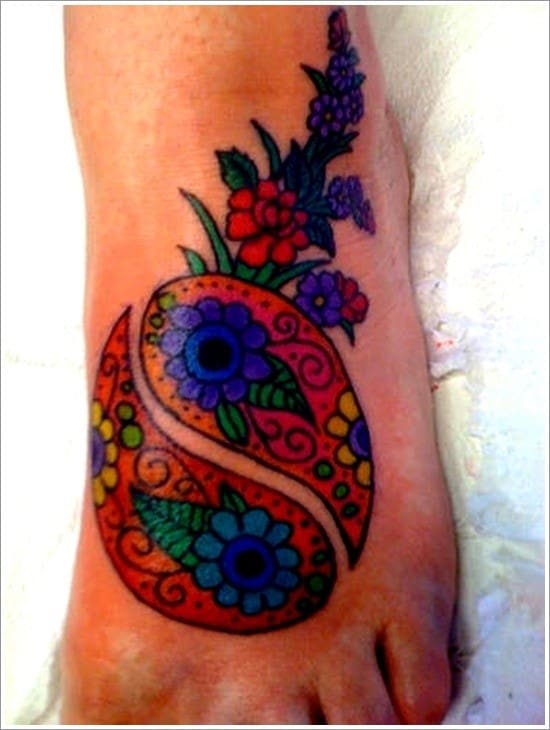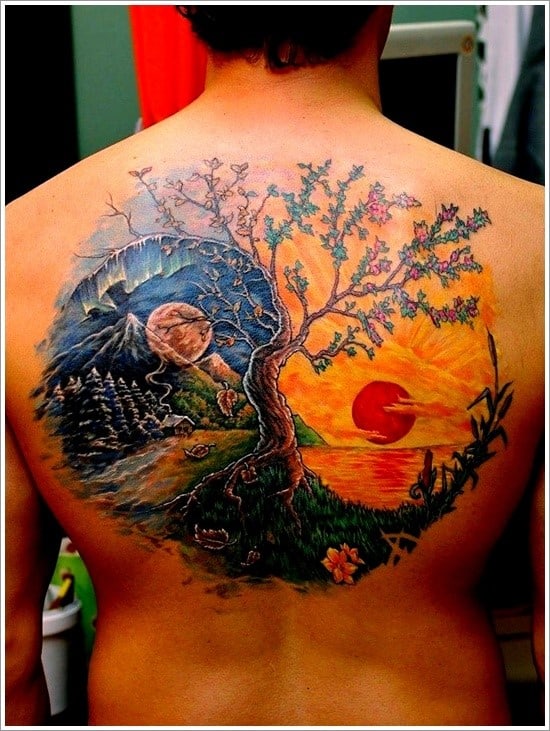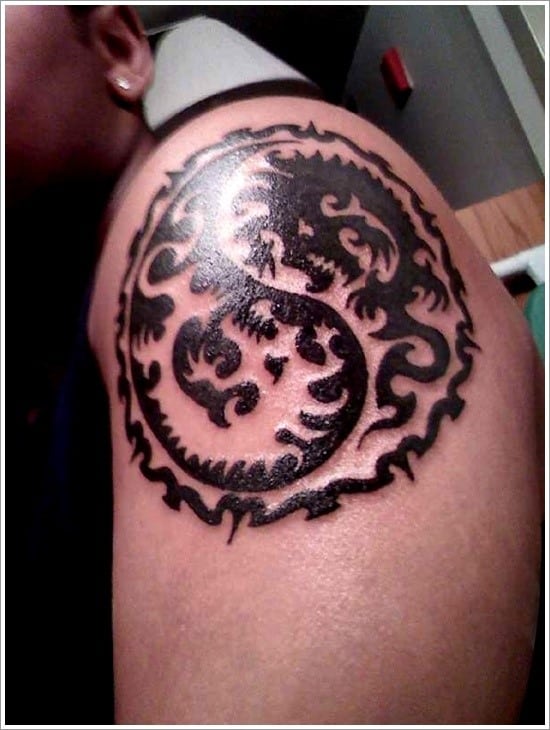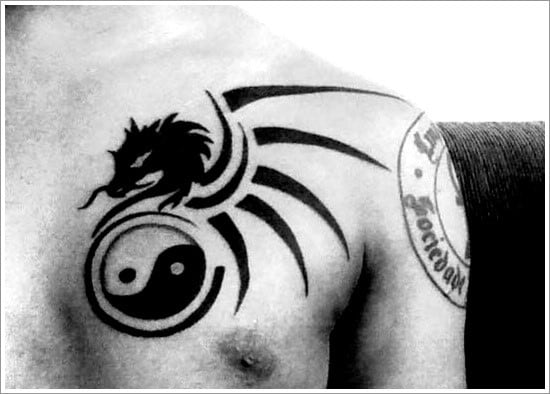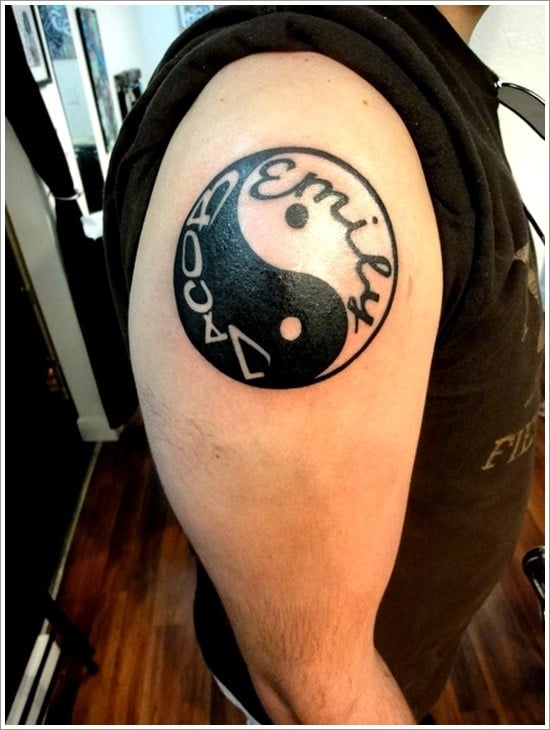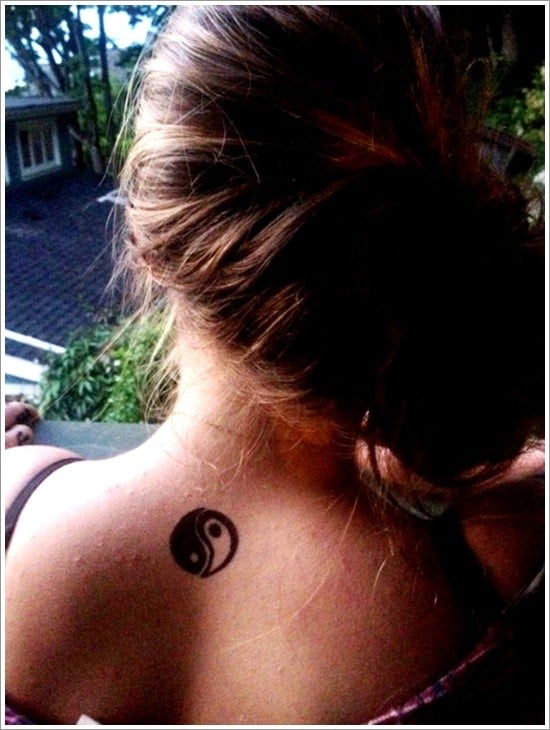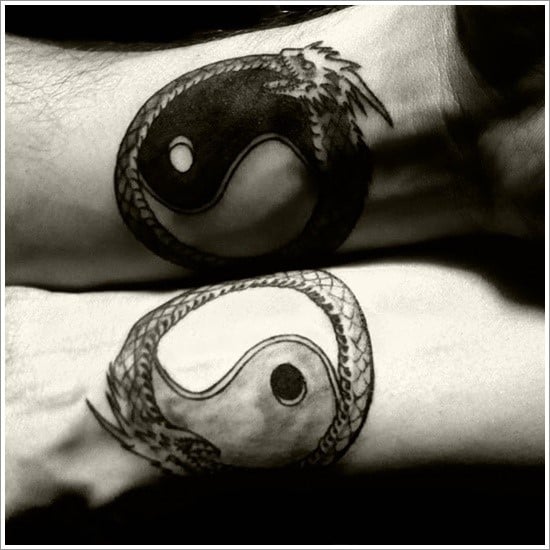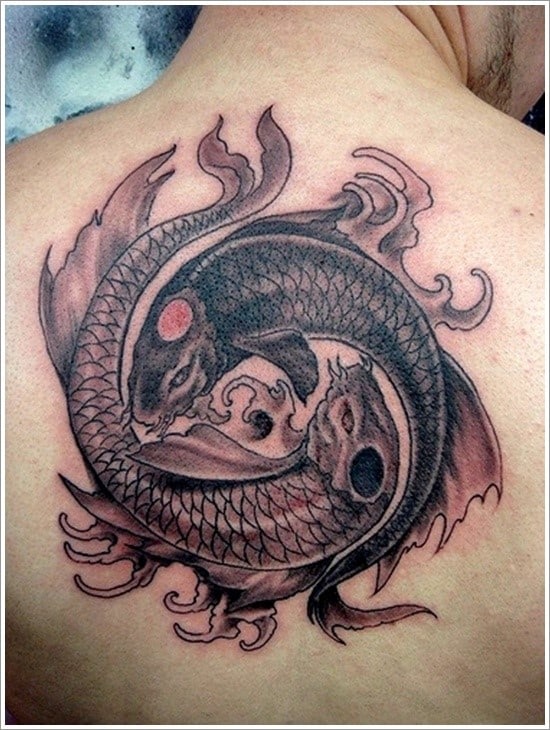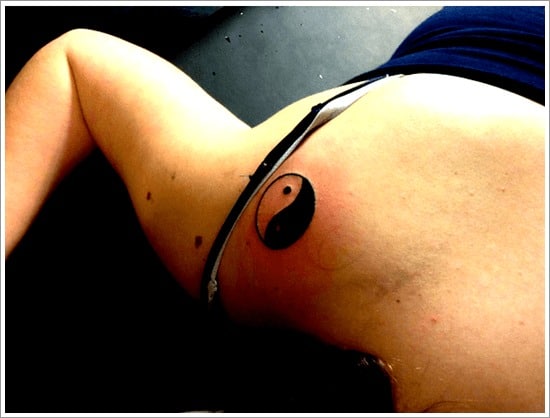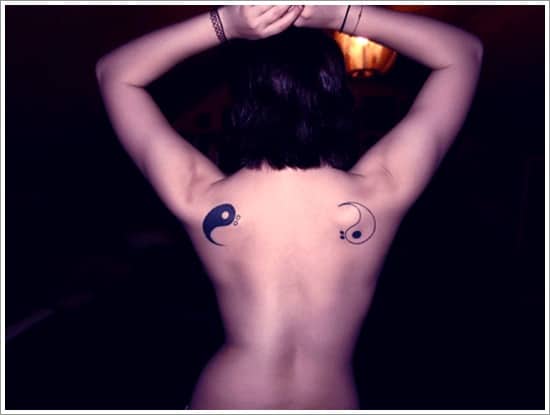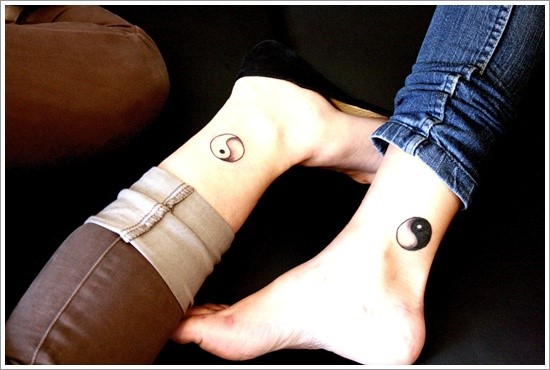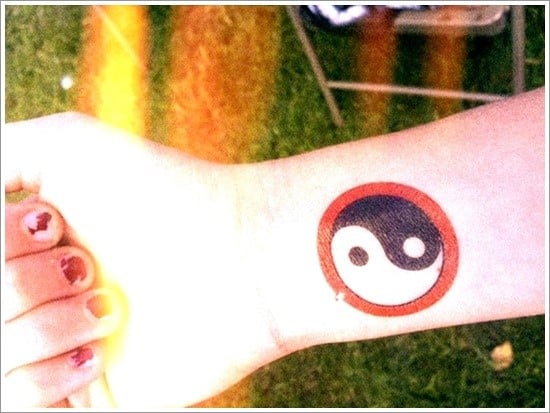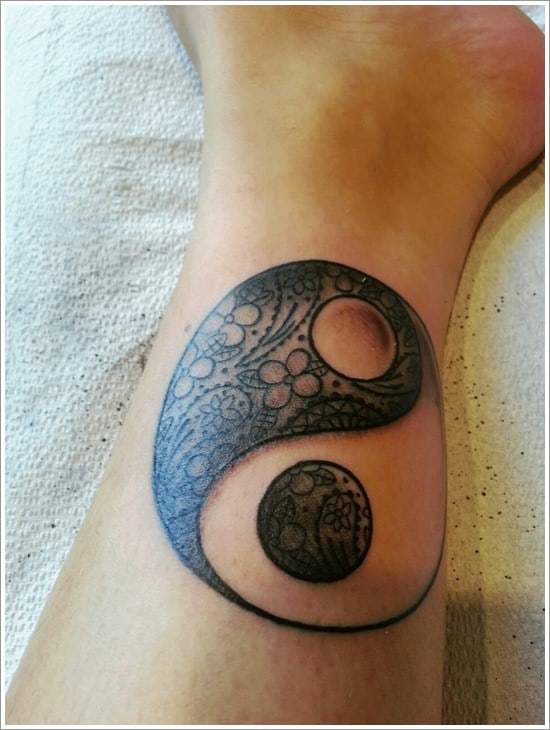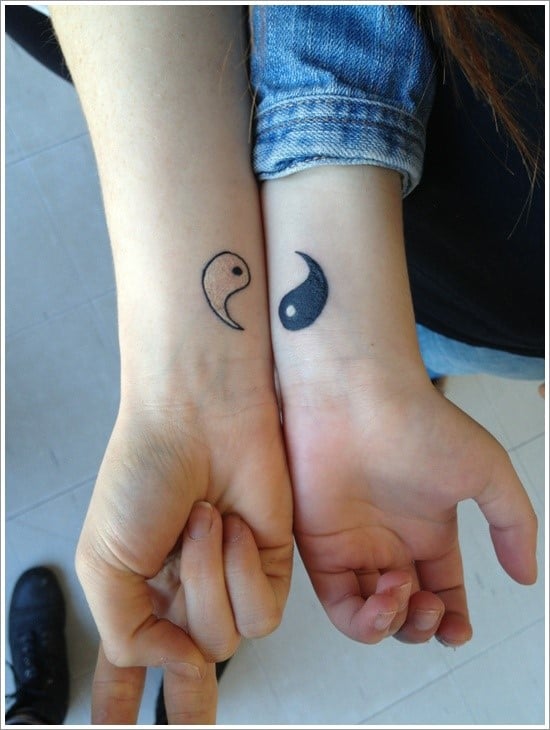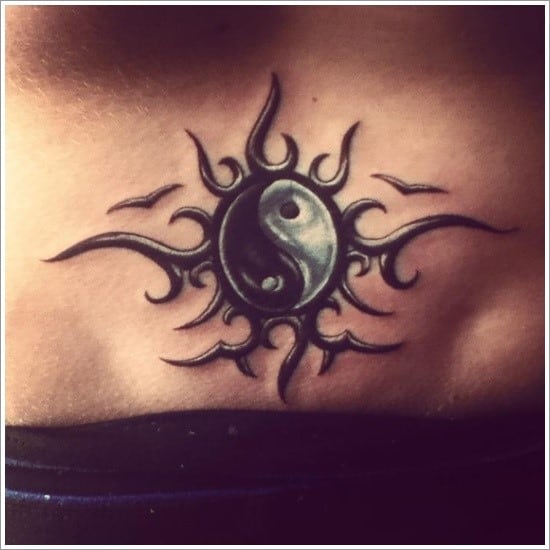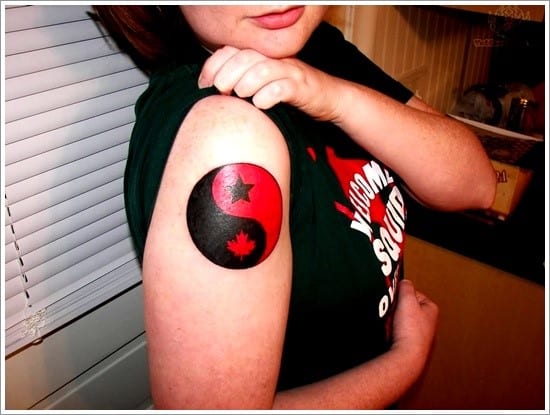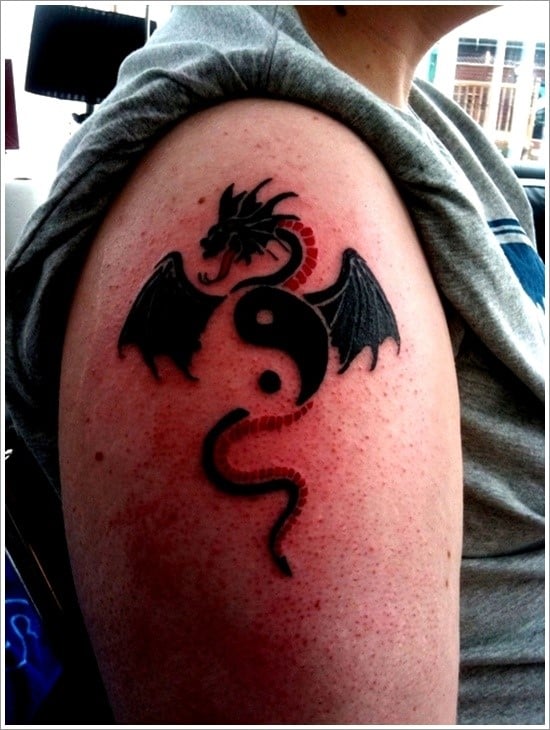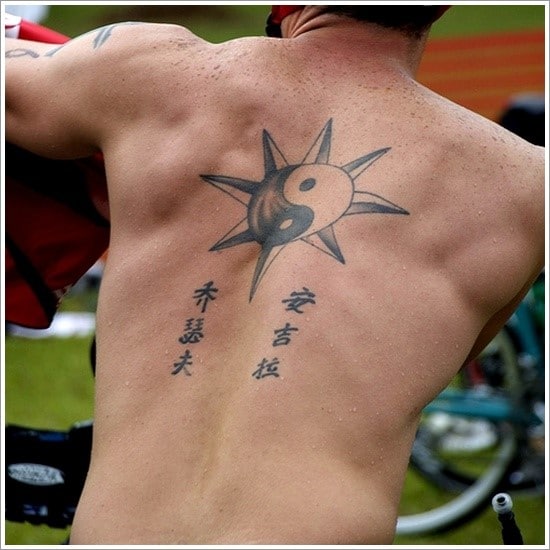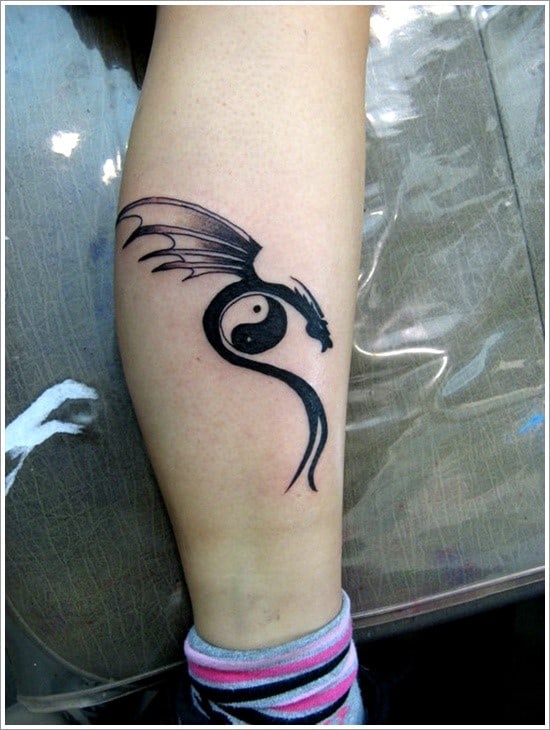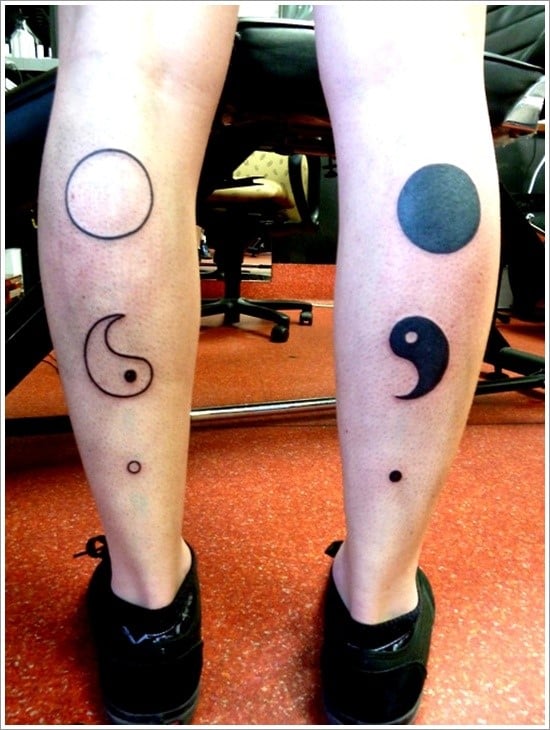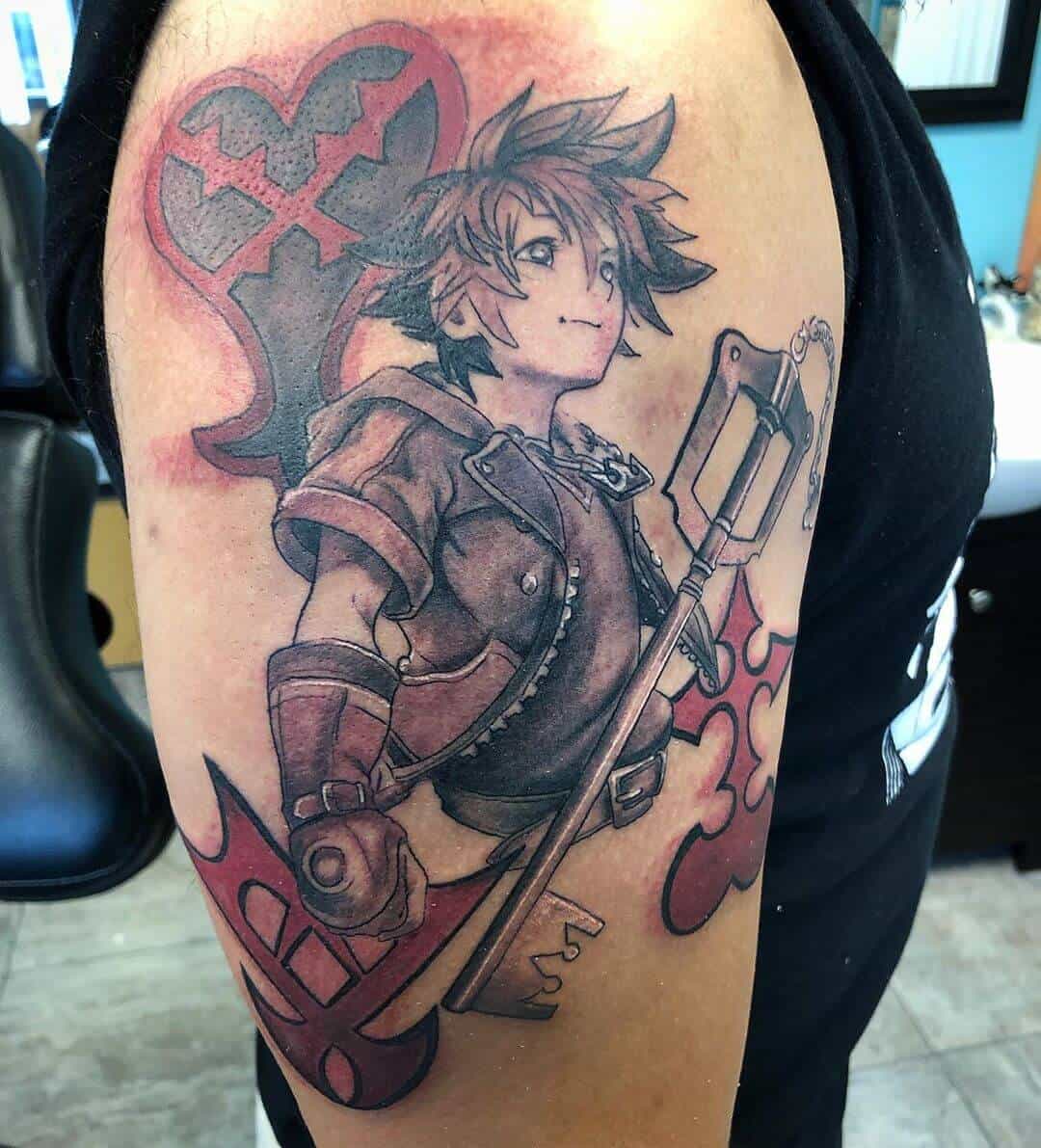The yin and yang is a symbol which has fascinated and intrigued humanity for hundreds of years.
Originating in ancient China, the symbol is often seen but rarely fully understood.

Alongside the infinity symbol, yin and yang is one of the most popular choices of pure symbolism to be incorporated into tattoo designs.
Deceptive in its simplicity and recognizable even after significant alteration of coloring and style, the yin and yang offers a surprising scope for creativity in tattoo art.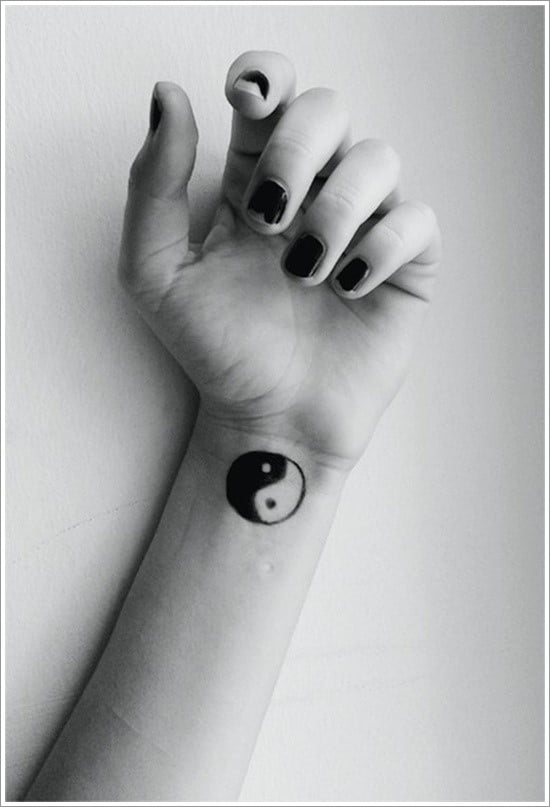
The symbol
Before getting a yin and yang tattoo, it’s a good idea to become familiar with the origins and meaning of this ancient symbol.
Yin and yang takes the form of a circle with a light and dark side, split with a curved line. The black side is the yin, while the white side is the yang. Additionally, both sides have small dots of the opposing side’s color.
As we’re about to see, all of these nuances are there for a reason and serve their purpose in conveying the meaning behind the symbol.
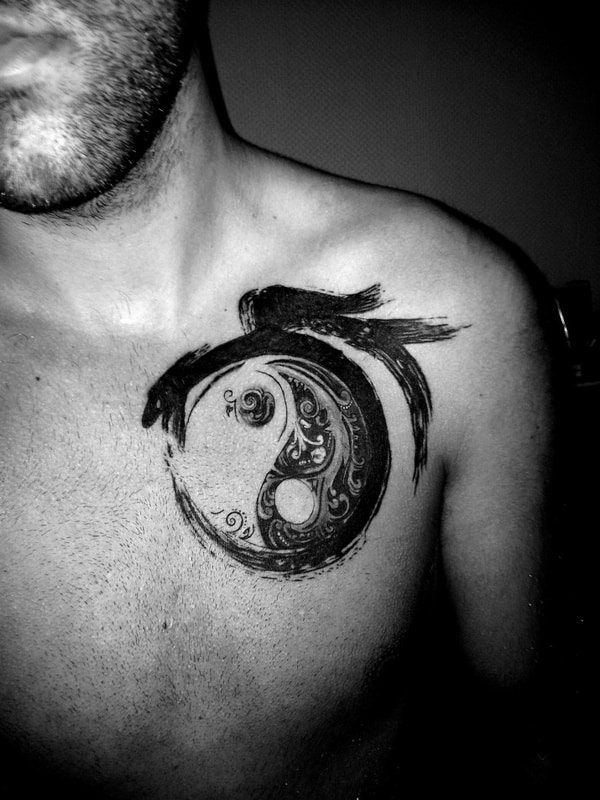
Yin and yang meaning
The symbol represents the concept of duality in Chinese philosophy.
According to this idea, seemingly opposing forces that appear to contradict each other might in fact be complementary and dependent on each other.
Despite being opposites, forces such as night and day or light and dark continue to coexist.
Recommended Reading: Don’t miss our guide to the coolest daisy tattoos next!
The yin and yang concept gives rise to further philosophical discussion, leading towards the conclusion that balance is the key principle upholding the universe and giving it meaning.
Would light exist if there was no darkness? Would ‘good’ mean anything if there was no ‘evil’ to compare it with? Both sides of the circle are needed to make it whole.
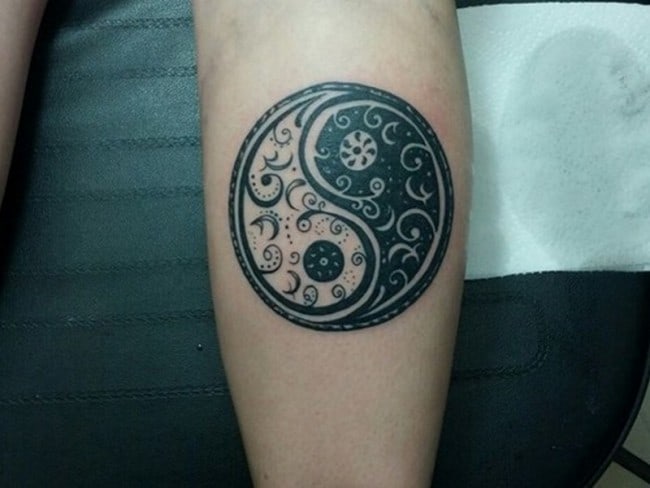
The small dots of the opposing color on each side of the symbol represent the idea that both sides carry a piece of the other, further underlining the interdependence of opposing forces. This means that nothing is absolute.
The fact that the line that separates them is curved, rather than straight, is understood to mean that there are no simple, absolute separations between two opposites.
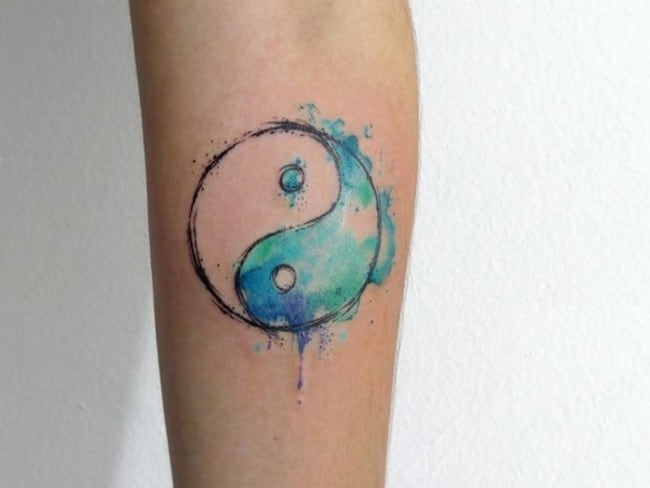
Yin and yang history
The origins of the duality concept and the symbol date as far back as the Yin dynasty, around 1400-1100 BCE.
The idea of dualism represented by yin and yang has influenced countless philosophers and scholars, particularly those associated with Taoism and Confucianism.
Recommended Article: See some of the best palm tree tattoos around in our latest guide.
Asian martial arts, medicine, art and literature, politics, and beliefs all carry traces of the yin and yang philosophy.
It’s believed that the symbol originated in the ancient Chinese time-keeping system. A pole was used to measure the changing lengths of shadows over the solar year.
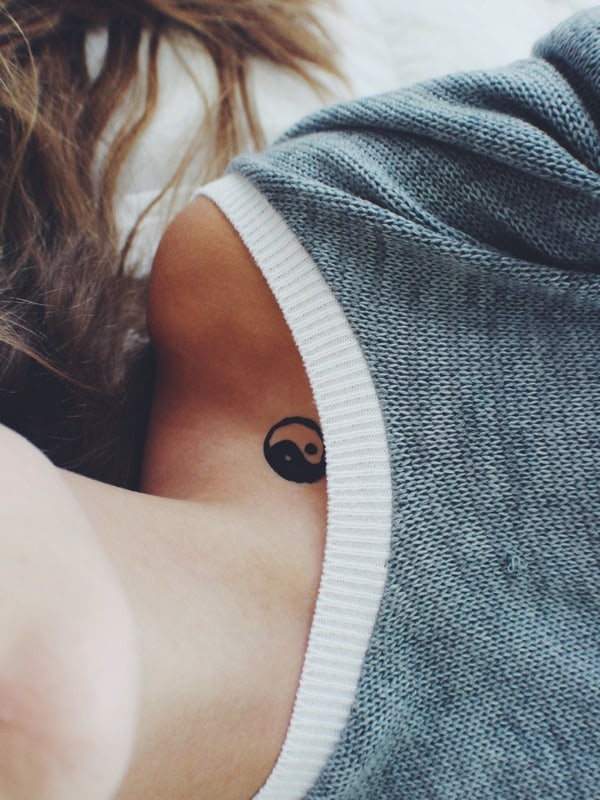
According to some sources, the daily changes of a pole’s shadow are very closely approximated by the shape of the yin and yang sides.
According to this theory, yin (the dark side) begins at the summer solstice – marking a time when there is less daylight and more darkness.
Conversely, yang (the light side) begins at the winter solstice – when days are longer.
Meaning of yin and yang tattoos
So knowing all that, what does a yin and yang tattoo mean?
Broadly speaking, it’s all about balance. According to the philosophy the symbol represents, balance and harmony are necessary to lead a fulfilling life.
The philosophy teaches us to calmly embrace the dualities of life – taking the ups with the downs, good times with the bad, the joys with the difficulties and challenges.
The tattoo also represents the idea of wholeness, particularly wholeness that comes from balance. It can mean being or striving to be, complete.
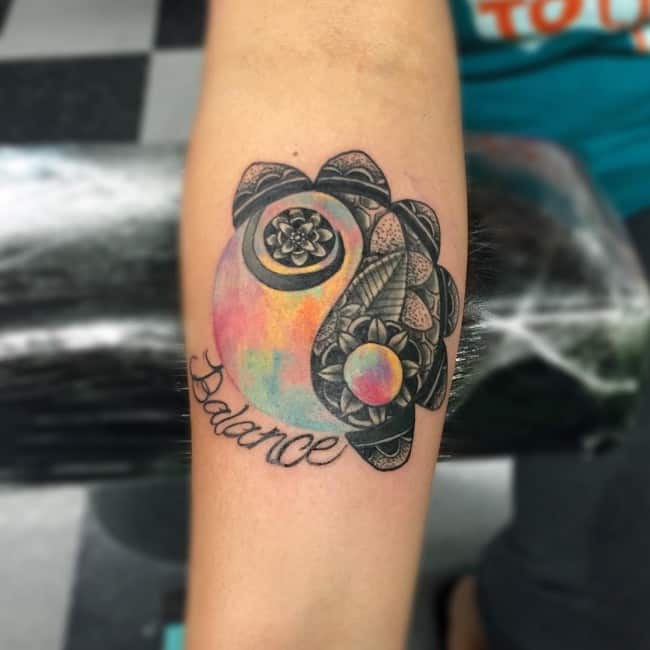
A yin yang tattoo can also serve as a reminder that nothing in this universe is absolute and everything has a limit and an end.
As such, it can be a symbol of hope – even the darkest night carries a hint of light and has to end eventually. Difficult times also have their good moments and will have to come to an end at some point.
Recommended Next: Don’t miss our article on dove tattoos.
The idea of no absolutes leads to another yin yang tattoo meaning – that of reminding ourselves that it’s impossible to always be just one thing.
For instance, there’s no strength without weakness, and no one can be strong and completely invulnerable 100% of the time. The yin yang states that we are all more than one thing.
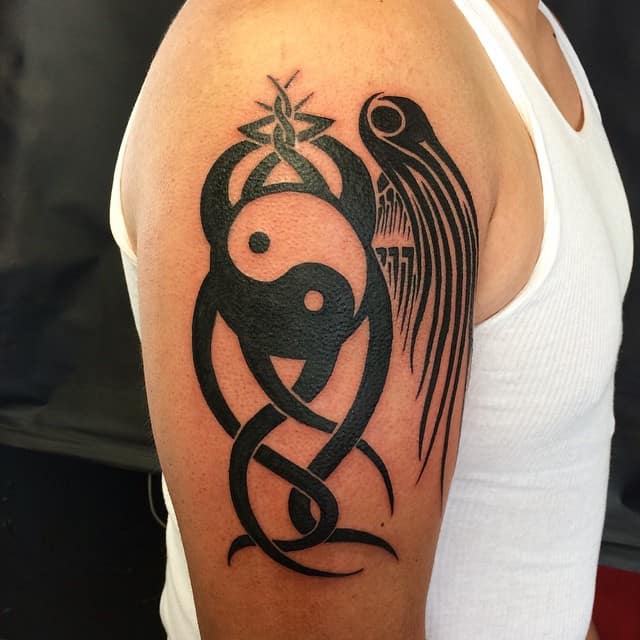
Another meaning of a yin yang tattoo is that of renewal – the symbol represents the passing of time and the cycle of life, among other things.
Fluidity is part of the symbol’s design – it’s not uncommon to see somewhat hypnotic, mesmerizing animations online of the symbol turning slowly.
As a representation of both wholeness and renewal, a yin and yang tattoo can also mean infinity. The symbol and the philosophy behind it are based in concepts thought to be eternal and unchanging – such as night and day, darkness and light, fire and water.
If the meaning of endlessness is what you’re primarily looking for in a tattoo, consider also the infinity symbol for your design of choice.
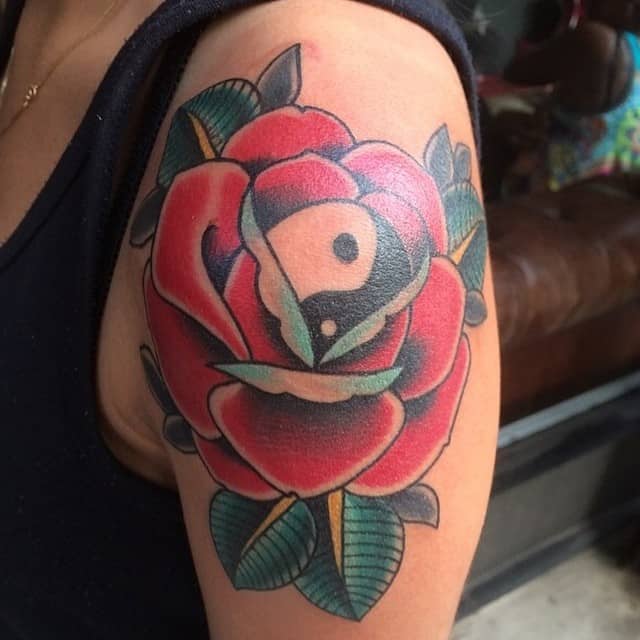
Yin and yang tattoo designs
For such a simple symbol, the yin yang yields an incredible number of creative renditions.
The basic yin yang symbol makes for a tattoo that’s elegant in its simplicity and fully scalable – it can be small enough to fit behind your ear or big enough to cover the whole top of your back.
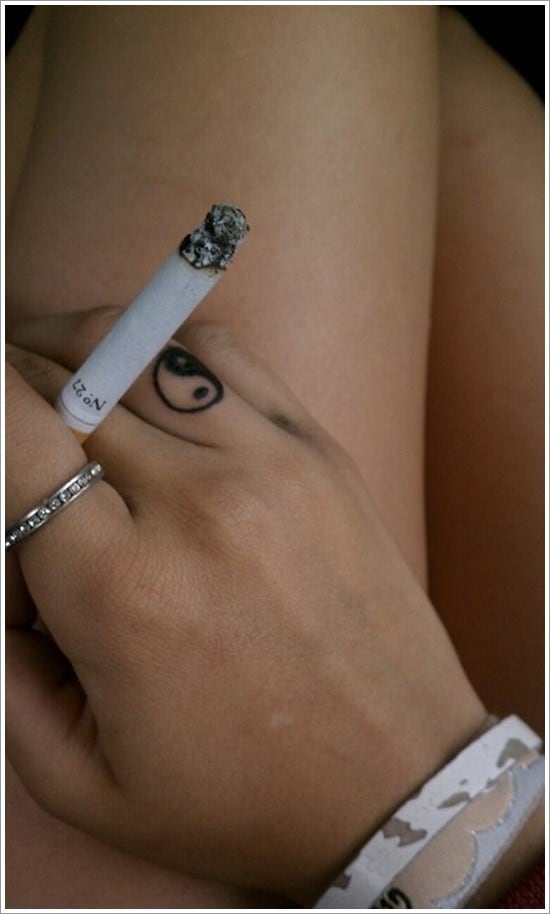
Decorative yin yang tattoos
Some of the most impressive tattoos in the yin and yang category are ones that make use of graphically complex imagery to represent the opposites signified by the symbol.
For instance, if yin is the night and yang is the day, why not fill the halves of the symbol with actual images of night and day?
This approach opens up endless creative solutions, such as:
Winter and summer – yin symbolizes winter, yang summer. Winter/summer scenery can be used to fill the symbol on each side.
Water and fire – yin is water, yang is fire. Consider removing the outline of the circle and adopting a more creative approach, allowing the flames and waves to ‘spill out’ freely – it’ll make for a more contemporary and more dynamic design.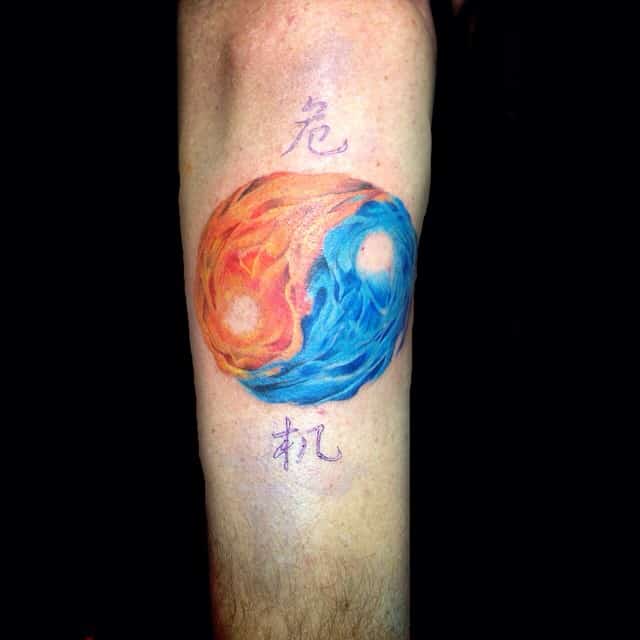
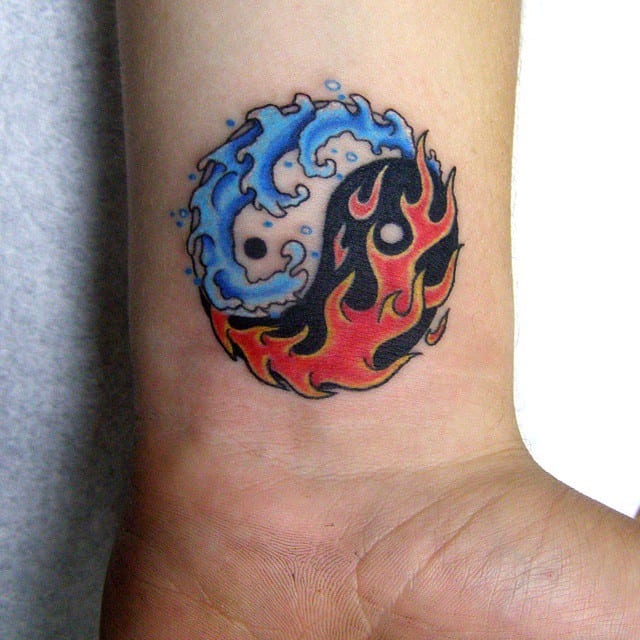
North and South – yin is North, yang is South. To represent this particular duality, consider for instance having a light overlay of a map, with appropriate orientation, on top of the symbol.
Earth and sky – Yin is the earth, yang is the sky.
Night and day – Yin is night, yang is day.
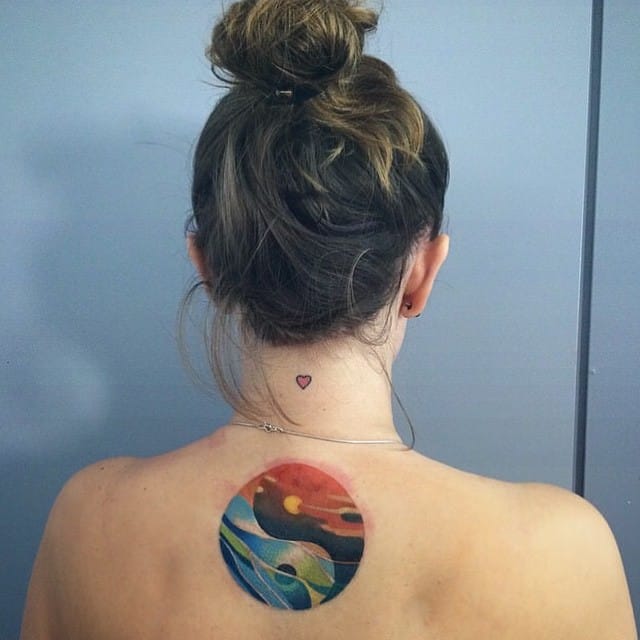
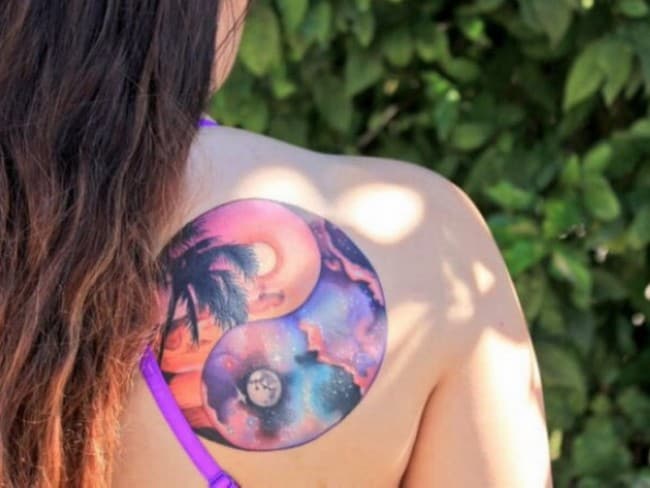
Valleys and mountains – yin represents the valleys, yang the mountains. This idea can make for a spectacular tattoo in the hands of the right artist – though it’s also likely to require a fair amount of space to do the graphics justice.
Yin yang tattoo with a mandala
A mandala is a complex, intricate geometric pattern, usually circular in shape. It has its origins in Hinduism where it is of complex spiritual significance. In contemporary Western culture, its simplified form is understood to mean a pattern that represents the cosmos in a symbolic way.
It’s easy to see why combining the yin yang tattoo with a mandala in a single design is such a popular choice – the two elements make perfect sense together.
Typically, the yin yang will be placed in the center of a circular mandala design – representing balance as the central principle of the universe.
Recommended: Check out some of the prettiest garter tattoos around!

Yin yang with a lotus flower
Another common combination is that of the yin yang symbol and the lotus flower. The lotus is a powerful symbol in a number of cultures and traditions, most notably Ancient Egypt, Buddhism, and Hinduism.
To Buddhists, the lotus symbolizes purity first and foremost – it’s a beautiful, delicate flower that appears immaculate despite growing only in murky water.
This contrast between the pure flower and the muddy, ‘unclean’ environment it thrives in has given rise to other associations, such as that of spiritual enlightenment – the pure spirit rising above earthly matters.
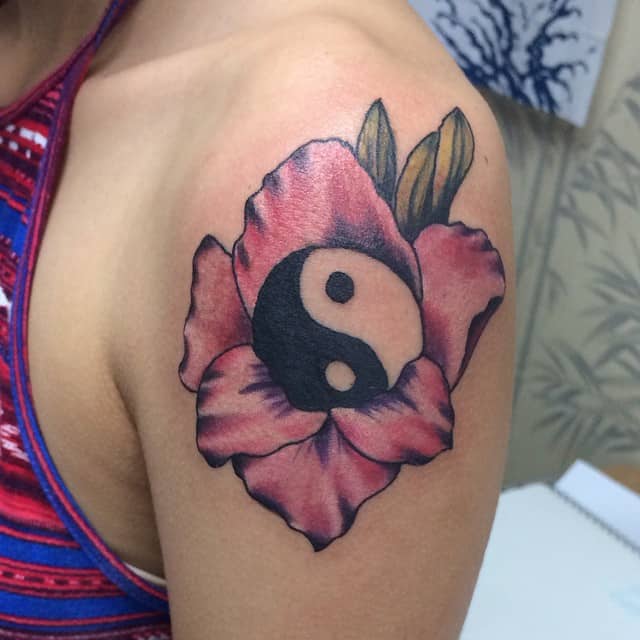
To Ancient Egyptians, the flower was a powerful symbol of rebirth and new beginnings – which, ideologically, fits in perfectly with the concepts represented by the yin and yang.
Interestingly, differently colored lotus flowers have slightly different meanings. Check out our dedicated article on lotus flower tattoos for more detail.
Animal yin yang tattoos
Another interesting option is creating a yin yang shape using animal forms. This kind of design has been highly popular recently, just as animal tattoos have gone up in popularity in general.
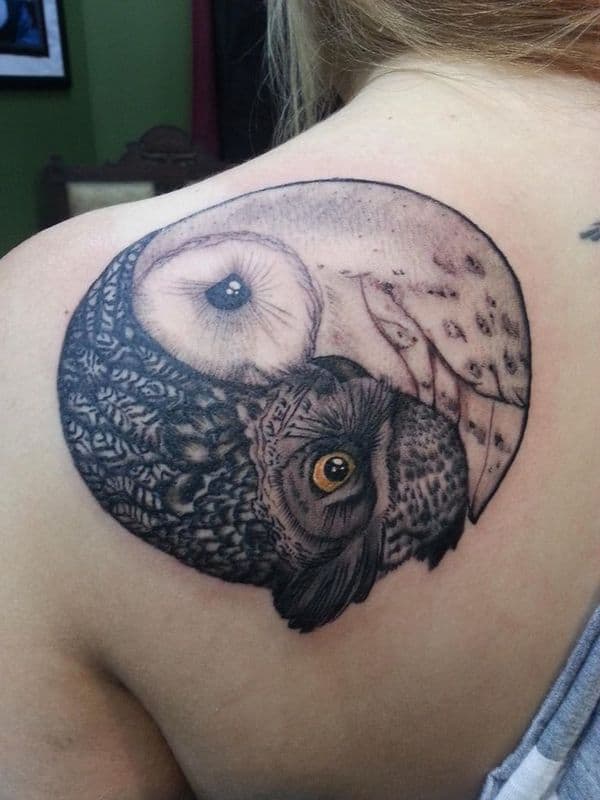
There are many possible takes on this idea, which generally involves two animals of the same species but different colors, interlocked in a yin yang pattern.
Some tattoos make use of simple outlines and cartoon-like animal forms. More intricate designs involve realistic-looking animals with a higher level of detail.
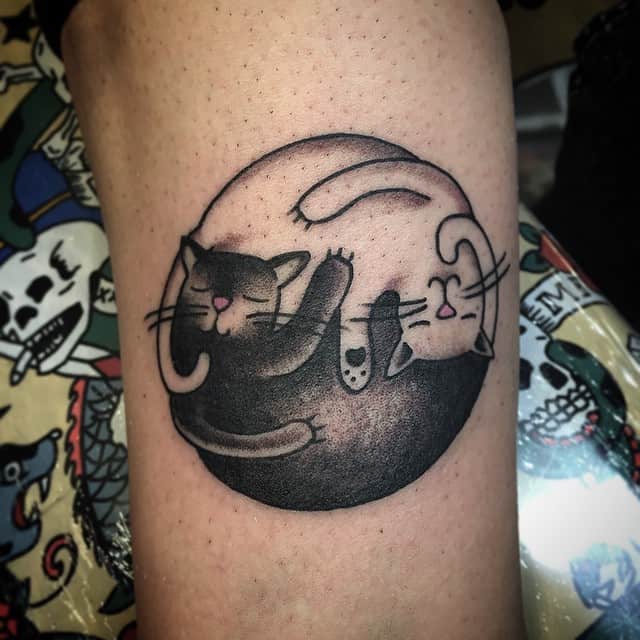
Mythical creatures, such as dragons and phoenixes, are also a great alternative to animals.
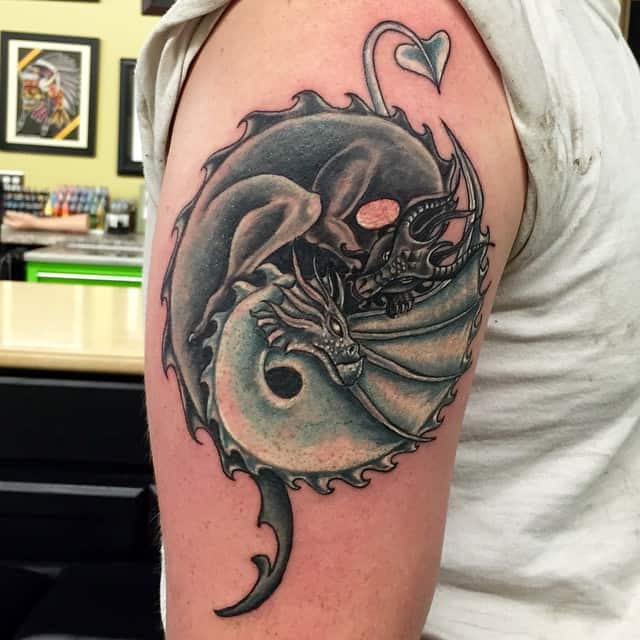
Tiger and dragon yin yang tattoo
It’s quite common to see yin yang tattoos consisting of a tiger and a dragon, interlocked in the symbol’s pattern. The tiger and the color orange represent yin, while the dragon and the color blue represent yang.
Check out more tiger tattoo ideas in this guide.
Koi fish yin yang tattoos
Koi are fish related to the carp, bred in Japan specifically for their colourful appearance. In traditional art and in tattoos, they are often represented in a pair, taking the shape of the yin and yang.
The shape of the fish is perfect for fitting into the halves of the symbol, and the eye falls precisely where the dot of the opposing color would be.
The symbolic meanings associated with koi include courage, ambition, and perseverance, as well as overcoming obstacles and succeeding in the face of adversity. Most of these meanings stem from the koi’s resilience and its ability to swim upstream.
Recommended Next: See some of the most beautiful spine tattoos in this guide.
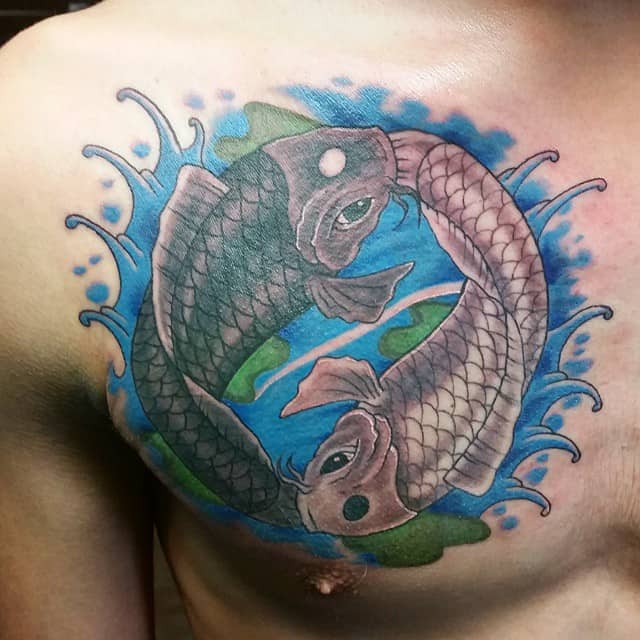
Matching yin yang tattoos
The yin yang symbol is a popular option for matching tattoos, particularly for couples. One of the interpretations of the forces represented by the symbol is that of relationships.
This is partly reflected in the feminine and masculine forces the sides of the circle represent, and partly in the belief that ‘opposites attract’, which has long since carried into common parlance.
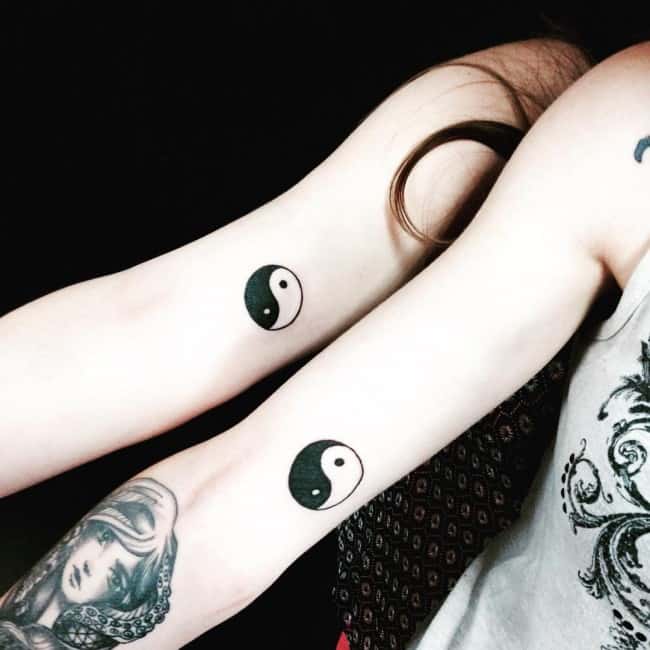
As matching tattoos, the symbol is either tattooed on each person in the same spot in its entirety, or each person gets a tattoo of one half of the circle so that the tattoos ‘complete’ each other.
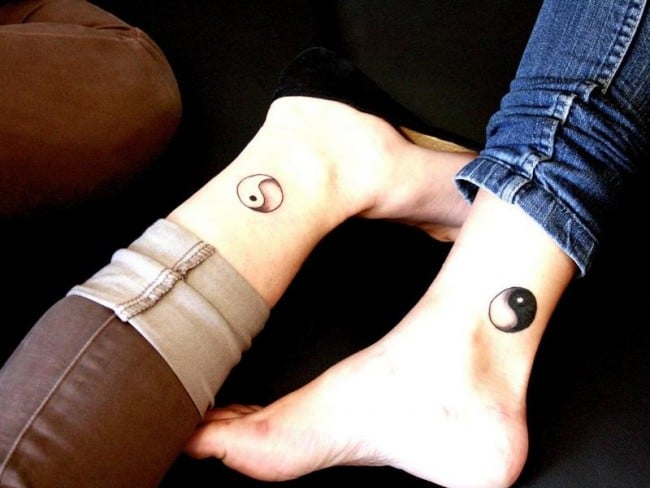
Things to consider
As with any body art, before getting a yin and yang tattoo there are three key considerations: the design, the placement, and the artist.
The first two will be somewhat interdependent. Simple designs, such as the traditional, basic yin yang tattoo will be suitable for any space – it can even be small enough to fit on the side of your finger.
If you opt for a complex, intricate design, it will likely need to be relatively large. This is to accommodate the ink and allow sufficient spacing between individual lines and elements. Lack of such space can lead to disappointing results – the tattoo won’t look as good as the design had on paper, and won’t age very well as the lines will begin to run into each other.
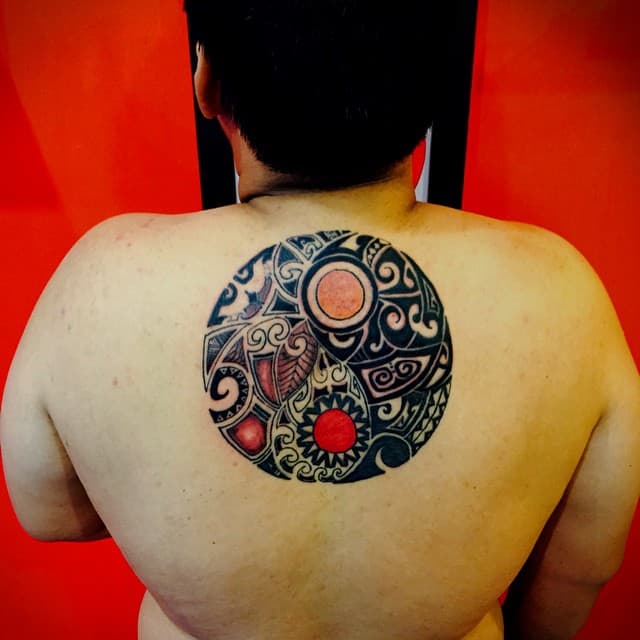
Your tattoo artist will be able to advise you on the appropriateness of your design vs. chosen placement.
Another consideration related to the placement of your yin yang tattoo is whether you wish it to be on display a lot of the time, or you’d rather keep it private.
Naturally, tattoos on areas such as the wrist, forearm, ankle, calf, and neck will be tough to cover up. If you’re looking to keep your tattoo concealed, consider your back, chest, stomach, thigh or shoulder – these are all areas easy enough to cover up with even casual clothing. The back of the neck is also an option if you have long hair.
Last but not least, perhaps the most important choice of all – the tattoo artist. In fairness, a simple yin yang symbol tattoo doesn’t require extensive experience on the part of the artist. It’s still very important to choose reputable, well-maintained tattoo studios – hygiene and expertise are crucial to ensure a safe and pleasant tattooing experience.
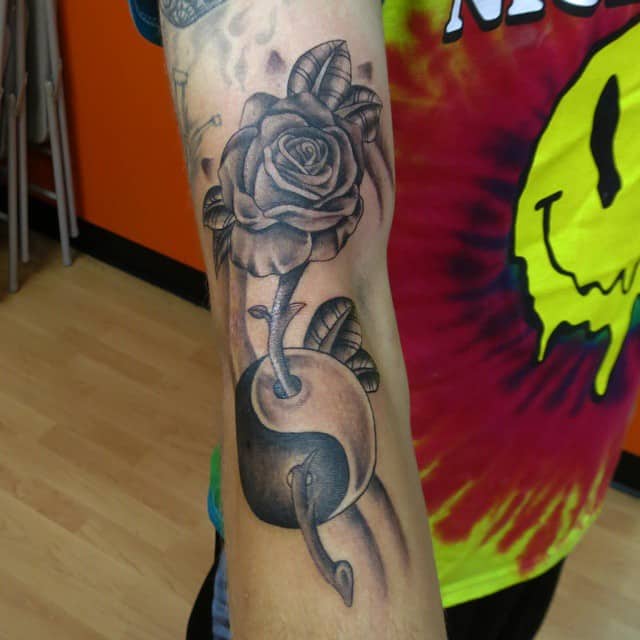
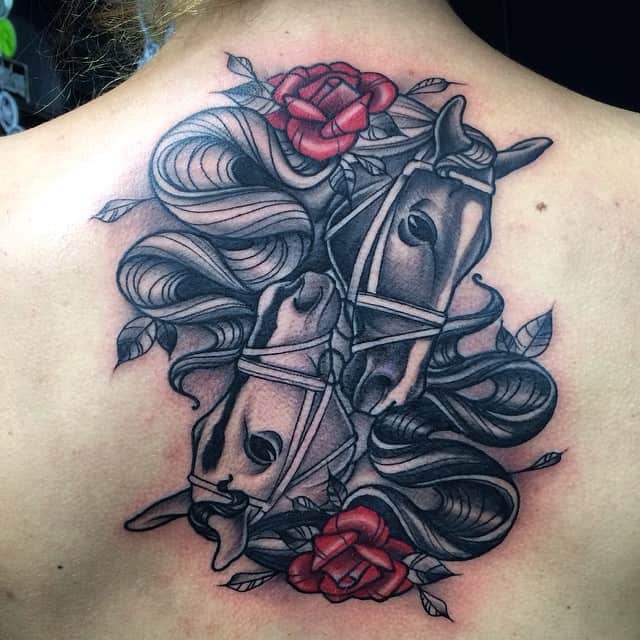
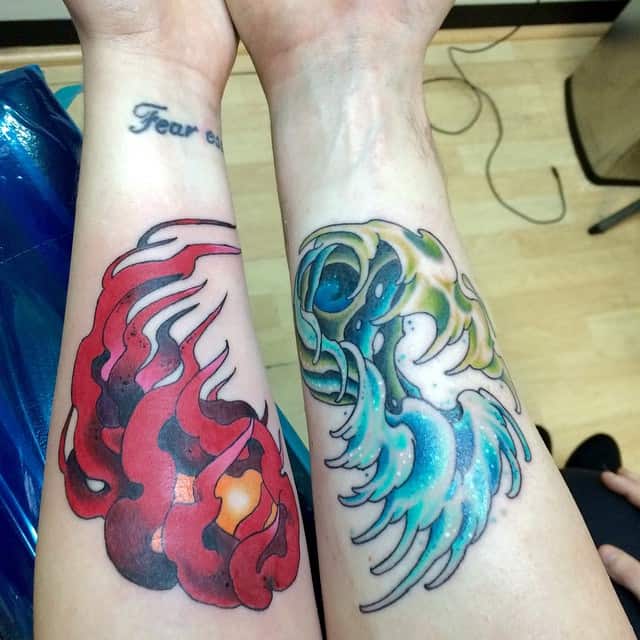
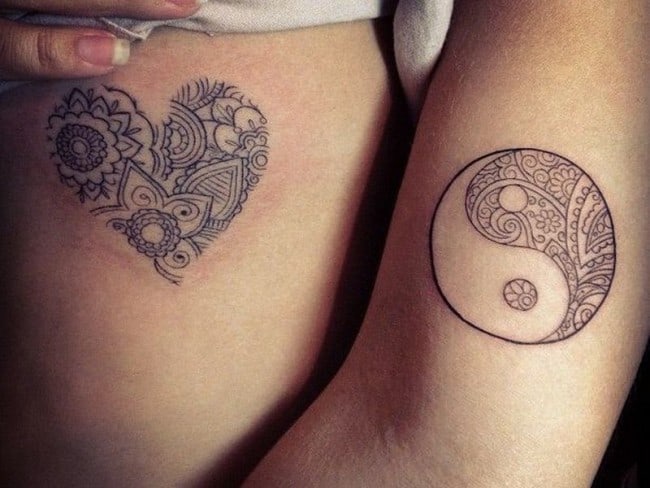
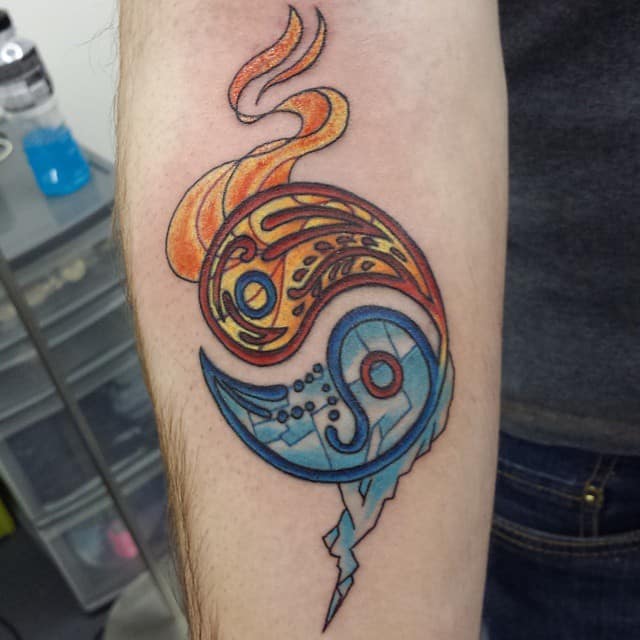
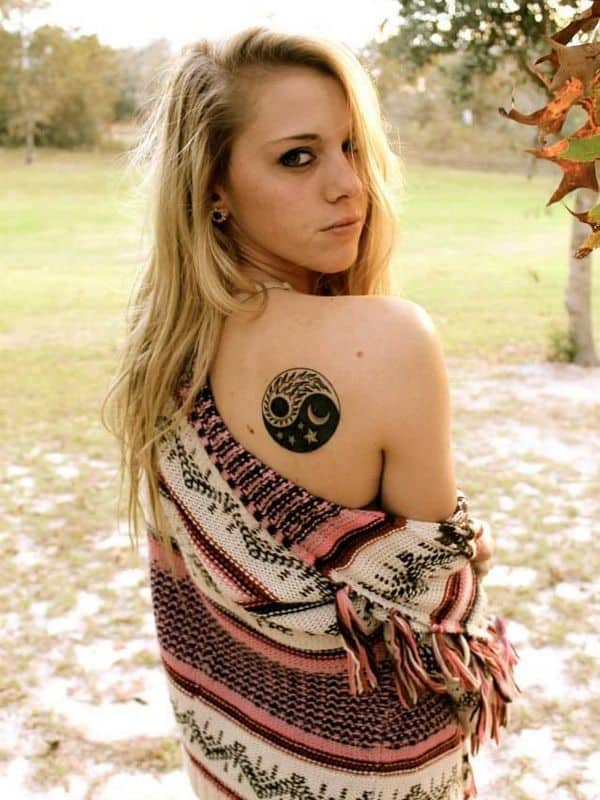
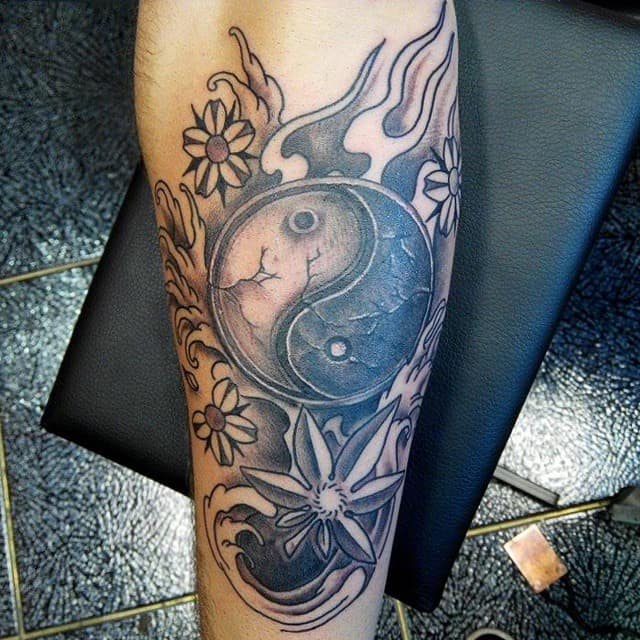
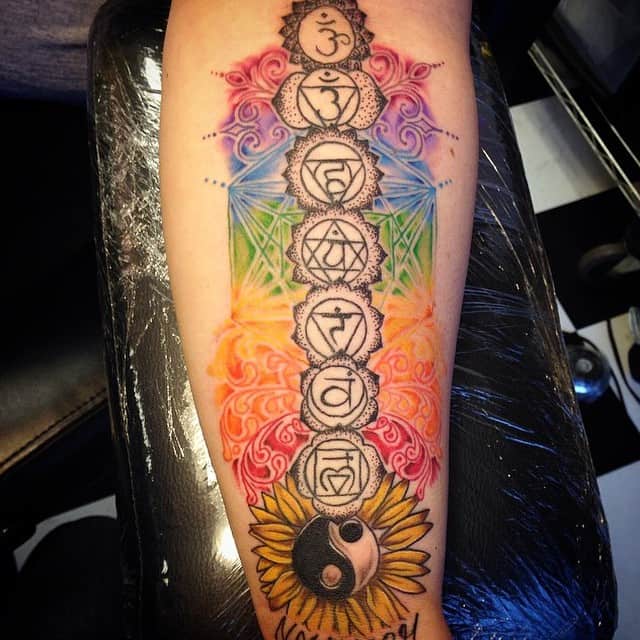
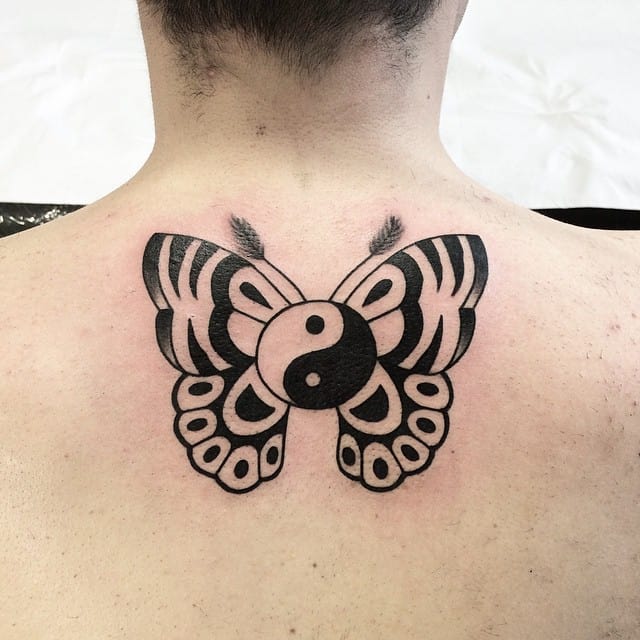
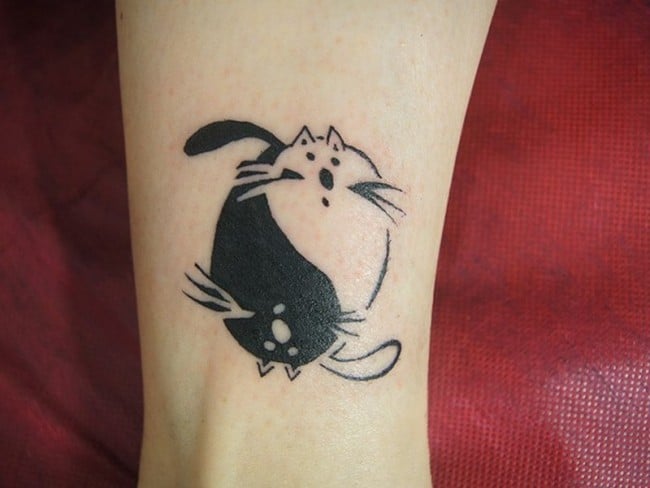
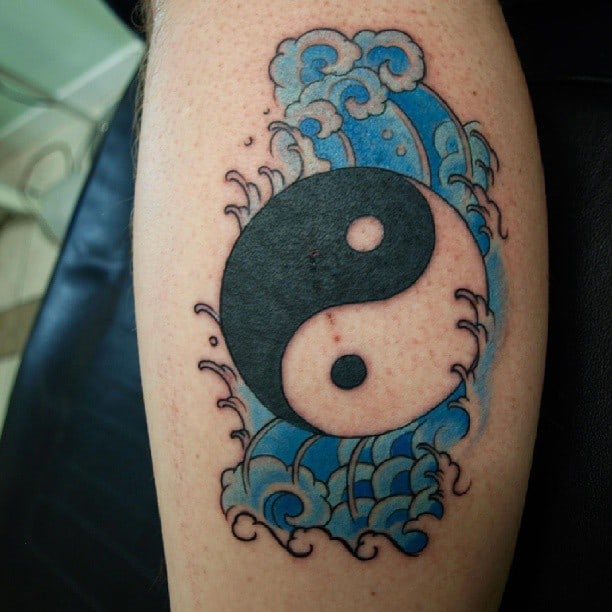
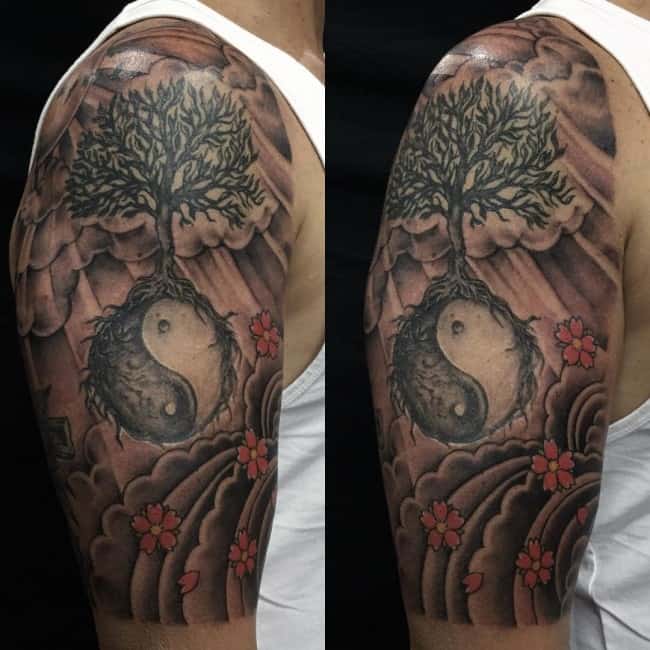
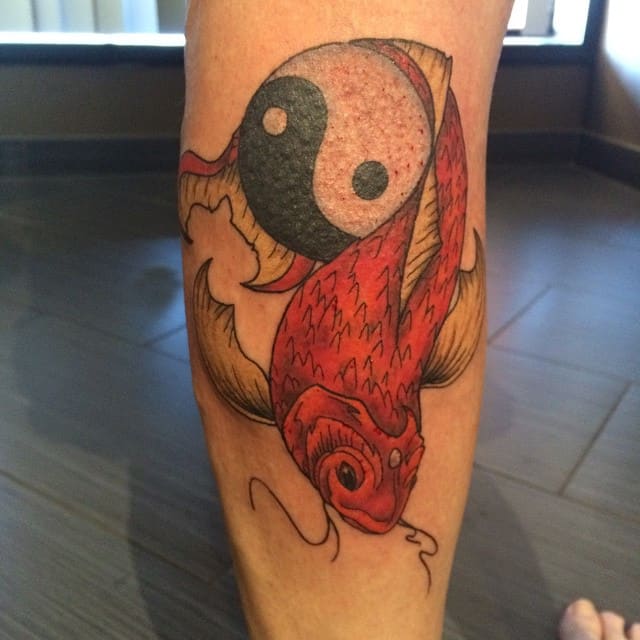
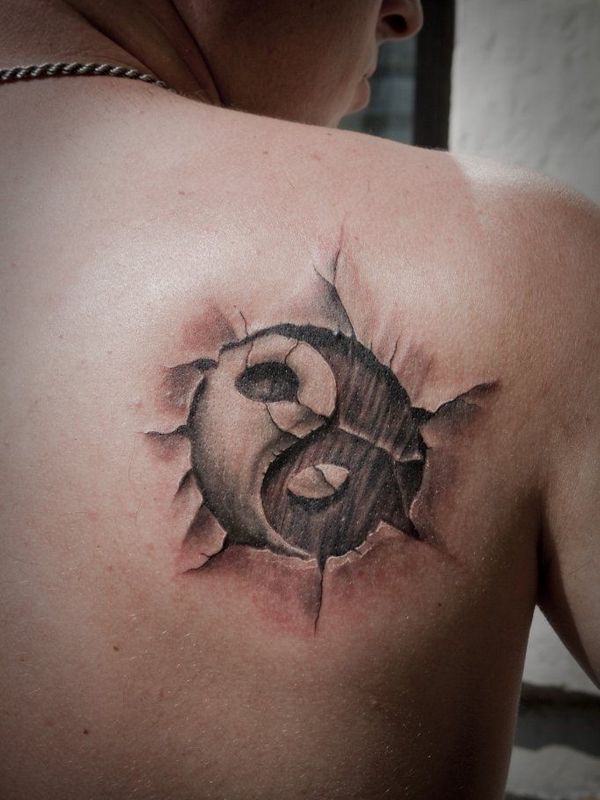
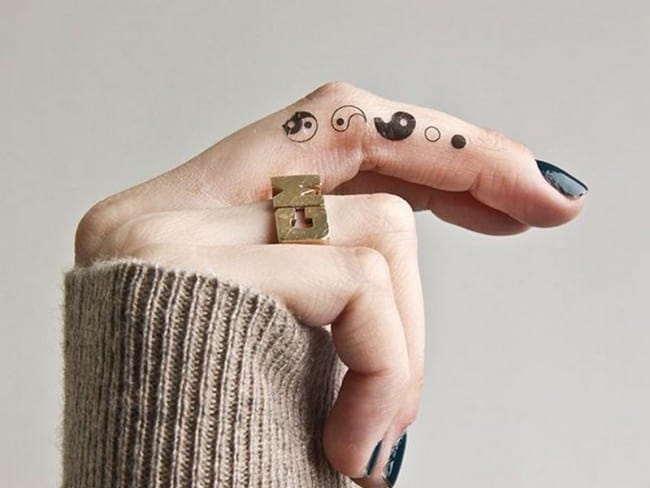
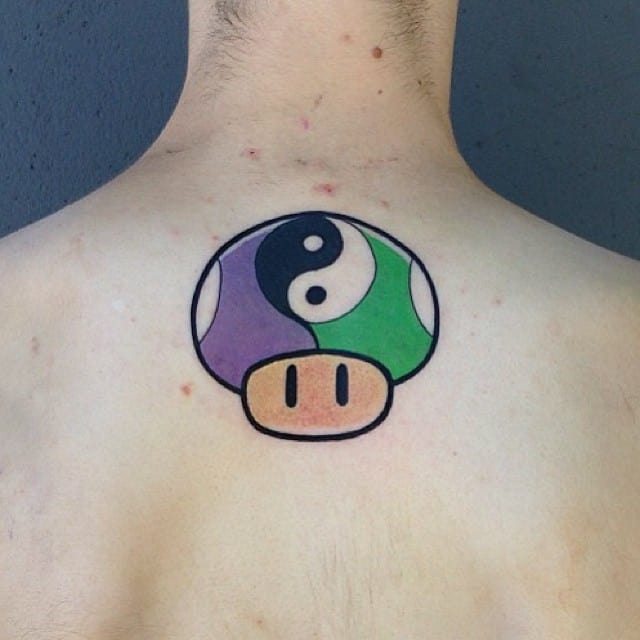
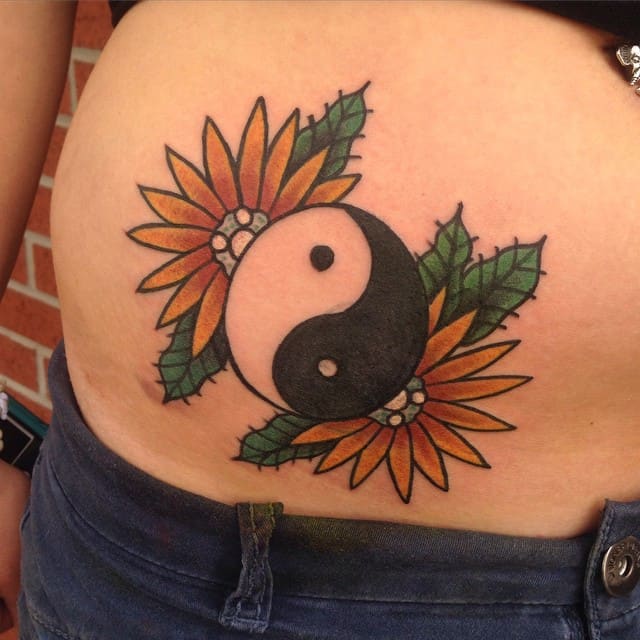
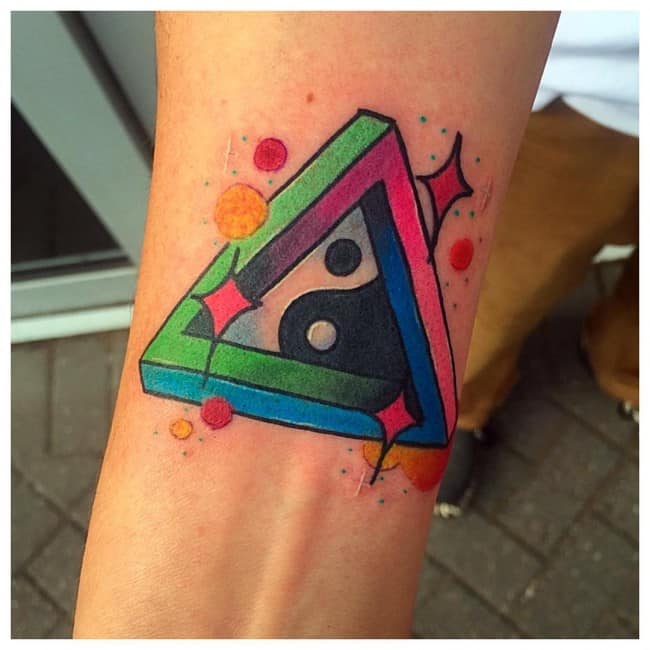
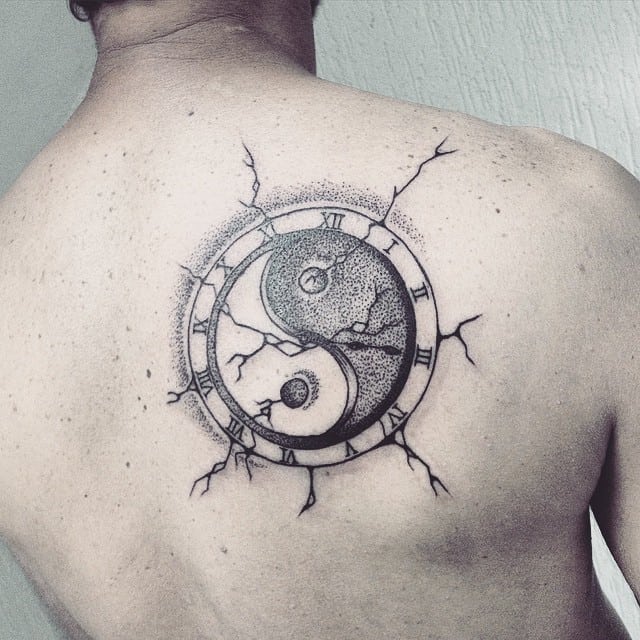
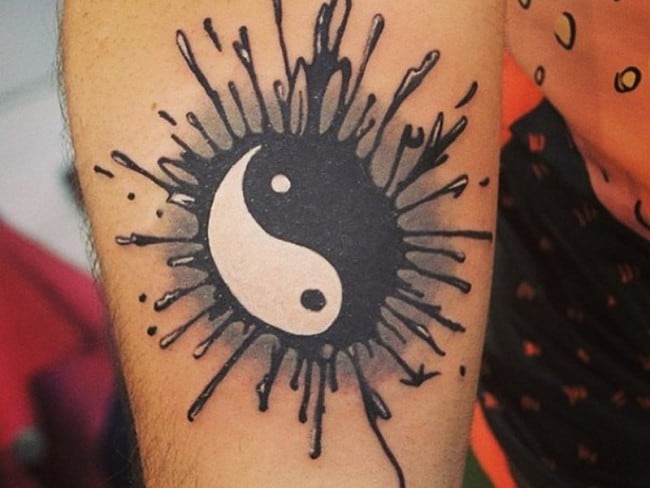
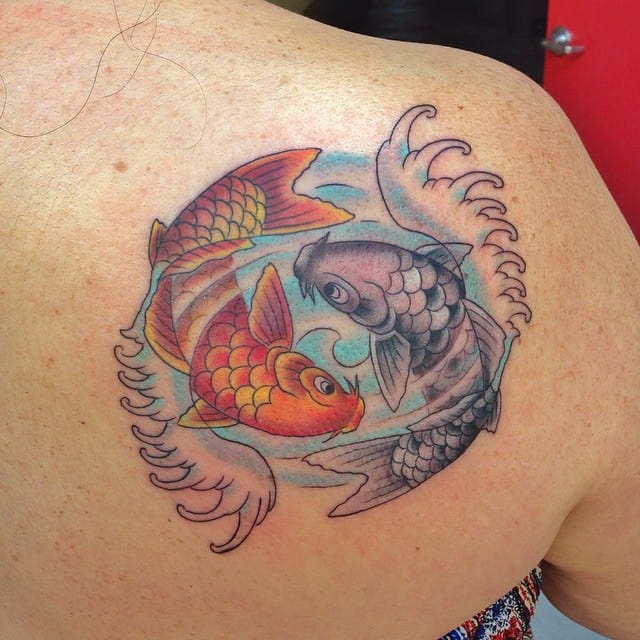 +
+
